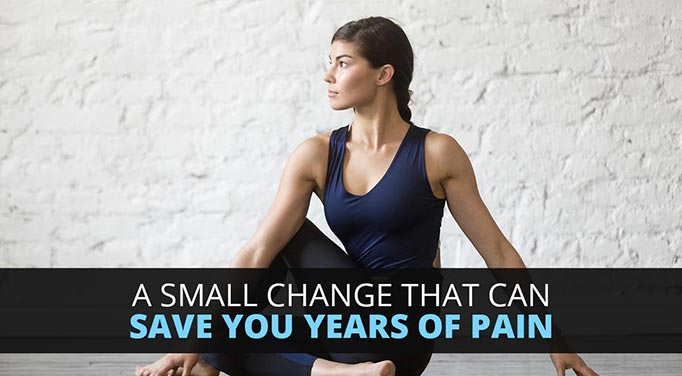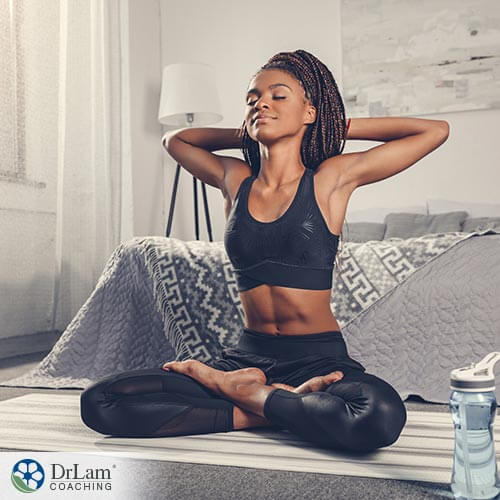 The way you stand, sit, and even lie down can add to or take away from your health. The stress you put on your joints, ligaments, and muscles can be a good form of stress that helps them stay healthy and flexible, or an unhealthy form of stress that can cause damage and pain to your musculoskeletal system. Posture is how you position your body. Stretching your body can improve your posture and also relieve some of the symptoms of pain and discomfort that might have accumulated from bad posture or injuries you may have experienced over the years.
The way you stand, sit, and even lie down can add to or take away from your health. The stress you put on your joints, ligaments, and muscles can be a good form of stress that helps them stay healthy and flexible, or an unhealthy form of stress that can cause damage and pain to your musculoskeletal system. Posture is how you position your body. Stretching your body can improve your posture and also relieve some of the symptoms of pain and discomfort that might have accumulated from bad posture or injuries you may have experienced over the years.
There’s an ancient Chinese proverb that says, “You are only as old as your spine.”
We believe this statement to be very accurate. A supple spine supported by strong core muscles can be a defining trait in your quality of life. It gives you a range of motion that allows you to be more active and physically fit, and it decreases the risks that come from a sedentary lifestyle that many people lead when they have chronic back pain.
Bending over correctly and doing the right stretches are vital for a healthy and limber spine. But not all forms of stretching are suitable for you – it really depends on your current condition, any injuries or damage your body has sustained, and how flexible you are right now.
Most people in Western countries don’t bend over correctly. If you’d like to do a little test right now to check whether you bend over in the right way, try this simple exercise: stand up straight with your hands on your waist, and then pretend there is something at your feet that you have to pick up, and then pick it up.
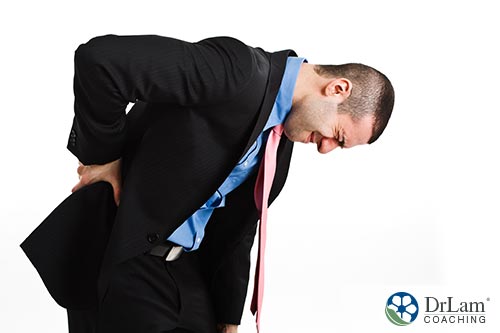 Did you bend your head and shoulders to look down and then stretched out your arm to pick it up? If someone was looking at you, would your spine have looked like it curved into a C shape? If so, you’re bending over incorrectly.
Did you bend your head and shoulders to look down and then stretched out your arm to pick it up? If someone was looking at you, would your spine have looked like it curved into a C shape? If so, you’re bending over incorrectly.
This kind of bending puts a lot of stress on the disks of your spine. This is also why some professions create a much higher risk of disk herniation and back problems than others. Dentists, for example, have to bend from the head and shoulders down to work on your teeth while sitting down on their stools. This can create a lot of tension and pain in their necks and backs.
Also, those that work on computers all day long and do not take the right measures to sit up straight and have their screens at eye level are also very much at risk for back and neck problems. Back and neck pain can be debilitating, affecting movement, sleep, work, and your general quality of life.
But back and neck problems don’t just affect the back and the neck – other issues can develop from there: headaches, dizziness, pins and needles in the legs, muscle spasms, and, of course, the health problems that come with the inability to be active or to exercise.
Let’s begin with the simplest change you can make right now that will have a huge impact on the health of your spine: bending from the hips, or what’s sometimes called “tabletop bending.”
So, now that you know how not to bend over, it’s time to start training yourself how to bend over correctly. What you do is you keep your back straight, with your feet about shoulder-width apart, as you bend from the hip joints down – with your back looking like a tabletop when you’re bent over.
This may feel awkward at first, especially if your hamstrings are stiff, but with practice you can make it the norm. What this will do is take the pressure off the spinal disks, which are not made for too much motion and deteriorate from the constant friction of incorrect bending and posture. It will, instead, put the pressure in its rightful place – on the hip joints, which are made for a much bigger range of motion, as they are a ball-and-socket type of joint.
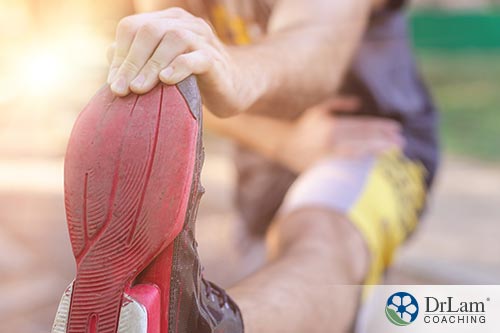 Hamstring stretching exercises can be very useful as an accompaniment to this training, as with more flexible hamstrings you’ll be able to bend from the hips naturally and easily. Some simple hamstring stretches include
Hamstring stretching exercises can be very useful as an accompaniment to this training, as with more flexible hamstrings you’ll be able to bend from the hips naturally and easily. Some simple hamstring stretches include
An important caveat here, though, is that you need to be very careful with any kind of stretching if you have back or leg injuries, if you suffer from advanced Adrenal Fatigue Syndrome (AFS) or if you have severe dysregulation of your NeuroEndoMetabolic (NEM) Stress Response System.
In the first two stages of AFS, you probably won’t experience many symptoms. You might feel a bit tired now and again, but you generally bounce back quickly. In fact, the lack of symptoms and their low intensity means that you probably won’t even know you have AFS. In these early stages, you are able to exercise without experiencing adrenal crashes. Much more caution needs to be taken if your AFS is more advanced.
If you start feeling tired all the time and your AFS has progressed to a more advanced stage, other symptoms will start to pop up. These include weight gain, central obesity, brain fog, insomnia, PMS, infertility, low libido, mild depression, anxiety, frequent colds and flus, heart palpitations, hair loss, food and drug sensitivities, sugar and salt cravings, and a feeling of being "wired and tired."
During early recovery, it’s much more important to get a lot of rest and sleep than to exercise. Taking up an adrenal fatigue diet is already going to be a big change, so take your time to adjust before adding more changes. Once you have the diet in place, you’re managing your stress, and you’re starting to get more rest and sleep, the natural next healing step is to start exercising again.
It’s usually best to be guided by an expert who has experience with AFS because the type, intensity, and frequency of exercise needs to be adapted to your specific state in order to avoid over-stimulating your sympathetic nervous system and triggering the release of adrenaline. But don’t avoid exercise altogether. Doing the right kind of exercise at the right time can speed up your recovery and add to your sense of wellbeing.
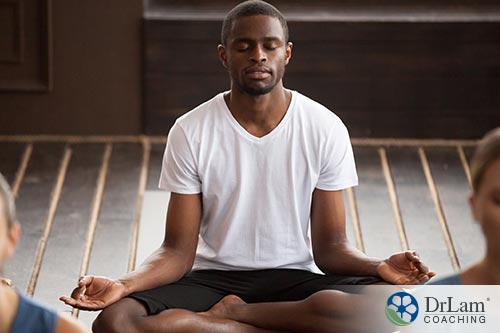 Adrenal breathing exercises are very gentle and can help you relax while oxygenating your body and improving your energy levels. Very light stretching would be the step after adrenal breathing, and you could try very mild forms of adrenal yoga exercises, which do not revolve around difficult or strenuous postures. They are much more focused on comfortable and supportive postures that you can easily maintain and help connect your mind and body.
Adrenal breathing exercises are very gentle and can help you relax while oxygenating your body and improving your energy levels. Very light stretching would be the step after adrenal breathing, and you could try very mild forms of adrenal yoga exercises, which do not revolve around difficult or strenuous postures. They are much more focused on comfortable and supportive postures that you can easily maintain and help connect your mind and body.
As your adrenals begin to regain their strength, the rest of your NEM also begins to balance. Your hormonal, metabolic, cardionomic, neuroaffective, inflammation, and detoxification responses all benefit from this. Gentle exercise, especially gentle stretching, is known for its restorative and healing power. It can balance your hormones, strengthen your metabolism, improve your heart health, calm your nervous system, reduce your inflammation, and support you in detoxification.
In conclusion, it’s all about doing what’s right for your current state, and then adapting as your state begins to change. You should never force your body to do anything when you have adrenal fatigue. A slow and gentle approach is key to a full recovery, that’s why we recommend very easy forms of stretching in adrenal yoga exercises. And if you’re not sure what’s best for you, try to avoid trial and error and instead get professional guidance. It will save you a lot of time and discomfort.
And in the meantime, practice the correct way to sit, stand, lie down, and bend over in order to protect your spine.
© Copyright 2018 Michael Lam, M.D. All Rights Reserved.
Just like exercise, stretching and bending have a right way and a wrong way, and doing them right can reap many health benefits, while doing them wrong can bring injury and slowed recovery. Learn the right techniques for your unique health condition here.
